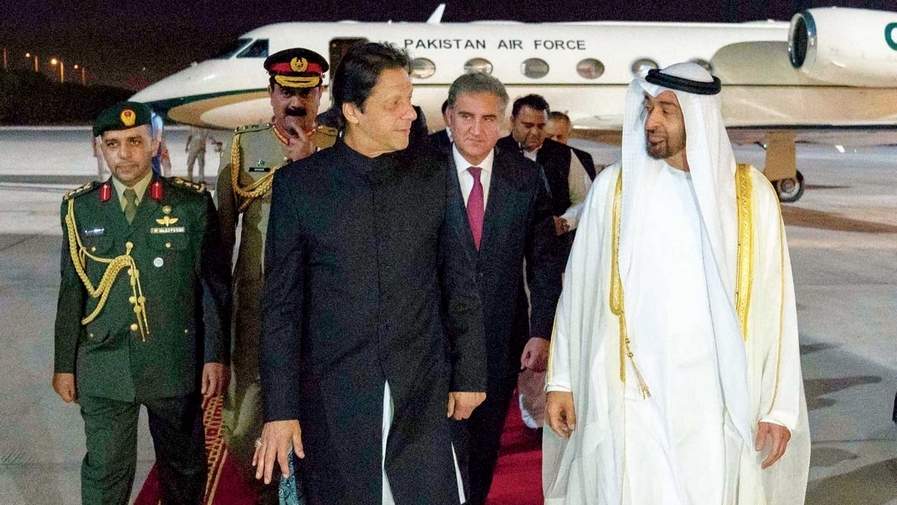UAE Crown Prince Mohamed bin Zayed welcomes Pakistan Prime Minister Imran Khan, Abu Dhabi, September 19, 2018
Originally published in Arab News Pakistan:
It would not be wrong to say that Pakistan has seen phenomenal changes this year, both on the home front and abroad. So the time is ripe to evaluate the country’s foreign policy and the major drivers that have have its external outlook.
The removal of former Prime Minister Nawaz Sharif by the Supreme Court in July 2017 brought down the established political order. The climate of uncertainty finally ended with the elections in July which propelled Pakistan Tehreek-e-Insaaf’s leader Imran Khan into power.
This new establishment is characterized by a unique modus vivendi between the civilian government, the military, and the country’s powerful judiciary: the three stakeholders are working in line without indulging in any subversive activities against each other. This has resulted in bold political initiatives in foreign policy with the full backing and coordination of the military establishment.
This policy shift has been marked out in Pakistan’s relationship with the political players in the Middle East. During the past five years, Islamabad had remained at arm’s length from the region’s conflicts, but this came at a price, notably when its refusal to join the Saudi Arabia-led military intervention in Yemen affected ties with the Kingdom and the United Arab Emirates.
Meanwhile, mutual distrust between the civilian government and state institutions, in the wake of the political agitation of 2014, created an environment in which foreign policy decisions were taken without deliberation or input from national security elites. The government failed to defuse the crisis in an amicable manner. It did little to embark on a proactive diplomatic engagement with Gulf State that could have set out Pakistan’s domestic security challenges.
As the Imran Khan Government took charge, it faced a severe economic crisis, fueled by a spiraling current account deficit requiring an influx of $12 billion to resolve balance of payments. The crisis compelled the government to re-engage with friends in the Gulf, an approach also driven by a realization that if Pakistan wanted to carve out a political role in the region, it had to strengthen its relationships. The Ministry of Foreign Affairs developed goals through coordination with the security establishment, an interaction starkly different from the practice of the past five years when there was no full-time Foreign Minister and diplomatic engagement with the Gulf and the Middle East was largely personalized.
Pakistan Snuggles Up to the UAE
Pakistan Reconnects with Its Friends in the Gulf
Imran’s government was welcomed not only by the royals of Saudi Arabia and the UAE, but also by the religious leadership of Iran. This reshaped the position in which Iran, facing the re-imposition of US sanctions, had been a key destination for Indian investment through the Chahbahar Port.
This time Pakistan’s realignment with the two key Gulf states is strategic. A marker with Riyadh will be the Kingdom’s investment in Pakistan through construction of an oil refinery and completion of a Free Trade Agreement. The UAE is providing a financial package and a promise of Emirati investments.
Politically, Pakistan, Saudi Arabia, and the UAE are now active players in the Afghan peace process. Islamabad has facilitated a meeting between US and Taliban negotiators in Abu Dhabi, attended by Saudi and Emirati officials. This opened up a new avenue for discussions following earlier talks in Qatar.
This combination of smart diplomacy and vigorous engagement is gradually carving out a political role for Pakistan, as it reduces its regional and international isolation. The new year starts on a positive note.

